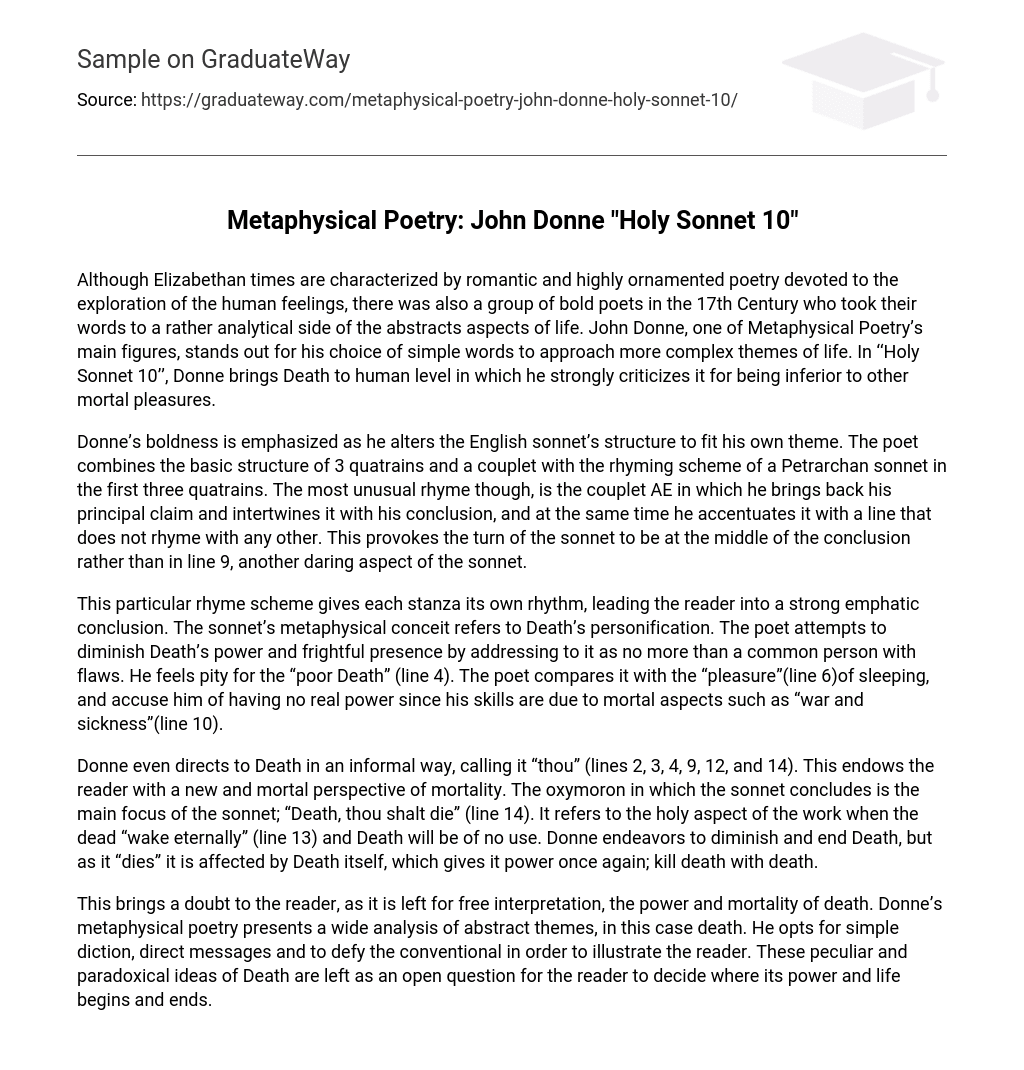Although the Elizabethan era was known for its romantic and elaborate poetry that delved into human emotions, there existed a group of daring 17th-century poets who focused on analyzing the abstract aspects of life. John Donne, a prominent figure of Metaphysical Poetry, stands out for his use of plain language to address profound subjects. In his poem “Holy Sonnet 10,” Donne humanizes Death and harshly critiques it for being less fulfilling than other mortal pleasures.
Donne’s bravery is highlighted through his alteration of the structure of the English sonnet to suit his own theme. In the initial three quatrains, the poet combines the basic structure of three quatrains and a couplet with the rhyming scheme of a Petrarchan sonnet. However, the most remarkable rhyme is the couplet “AE” where he reintroduces his main argument and interweaves it with his conclusion, further accentuated by a non-rhyming line. This daring move causes the turn of the sonnet to occur in the middle of the conclusion, rather than in line 9, presenting another audacious aspect of the sonnet.
This specific rhyme scheme provides each stanza with its own rhythm, guiding the reader towards a strong and emphatic conclusion. The sonnet’s metaphysical conceit involves the personification of Death. The poet aims to diminish Death’s power and terrifying presence by addressing it as nothing more than an ordinary person with flaws. He feels sympathy towards the “poor Death” (line 4). The poet compares Death to the “pleasure” (line 6) of sleeping and accuses it of lacking real power since its abilities are merely due to mortal factors such as “war and sickness” (line 10).
In this poem, Donne addresses Death in a casual manner by referring to it as “thou” multiple times. This informal approach offers the reader a fresh and mortal perspective on mortality. The sonnet’s main focus is the oxymoron found in its conclusion: “Death, thou shalt die.” This line highlights the sacred aspect of the poem, suggesting that when the dead awaken eternally, Death will lose its purpose. Donne strives to diminish and ultimately end Death, but in doing so, Death is ironically empowered once again – killing death with death.
In Donne’s metaphysical poetry, he explores the abstract theme of death by using simple language and unconventional methods to engage the reader. This uncertainty surrounding the power and limits of death leaves the reader with a question to ponder.





